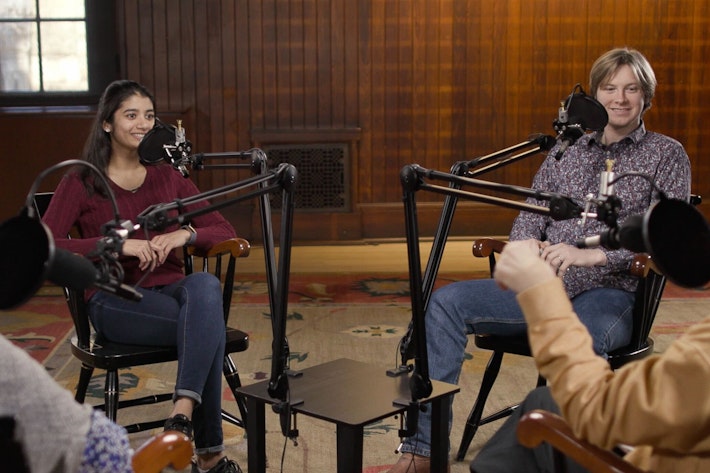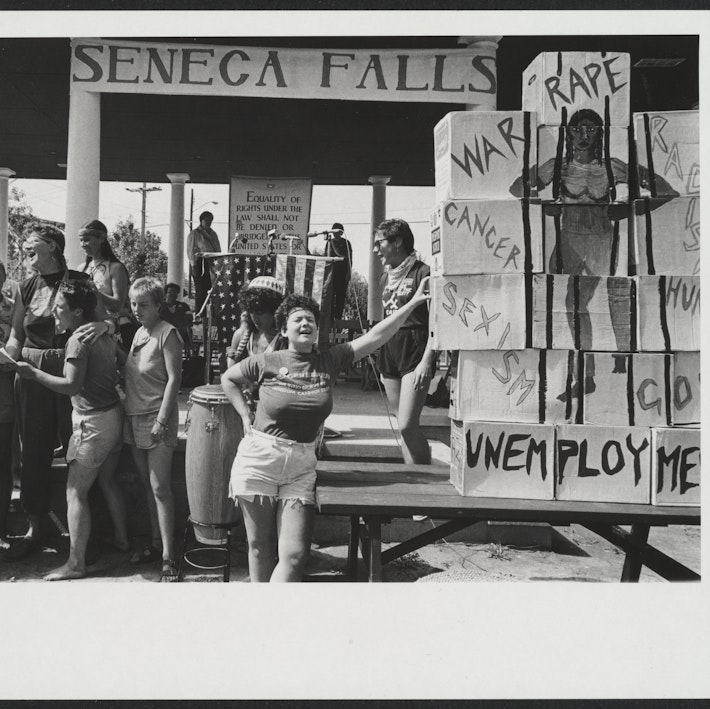Help Us Decode This Print
An intriguing e-mail arrived at the Schlesinger Library from a bookseller in January. Would we be interested in purchasing an unusual print that he’d just acquired? Titled “Leaders of the Woman’s Rights Convention Taking an Airing,” it was published in New York by James S. Baillie in 1848.
An intriguing e-mail arrived from a bookseller in January. Would we be interested in purchasing an unusual print that he’d just acquired? Titled “Leaders of the Woman’s Rights Convention Taking an Airing,” it was published in New York by James S. Baillie in 1848. In the scan that the bookseller sent, there were three women in the foreground and a fourth riding away. The dealer speculated that the woman in the center was Elizabeth Cady Stanton. He hadn’t found evidence of the print’s existence anywhere else.
Were we interested? You bet! We forwarded his message to three scholars who are familiar with the iconography of the early women’s movement: Ann Gordon, a research professor emerita in the Department of History at Rutgers University and editor of the papers of Elizabeth Cady Stanton and Susan B. Anthony; Allison Lange, an assistant professor of history at Wentworth Institute of Technology; and Lisa Tetrault, an associate professor of history at Carnegie Mellon University. All three responded quickly and generously.
None of them had ever seen this print before. All were surprised by such an immediate response to the July 1848 convention at Seneca Falls. They agreed that this image was meant not to flatter but to satirize the women who had attended, portraying them as unfeminine. The women on horseback are riding astride their steeds, not sidesaddle. Those hitched-up skirts and exposed legs? Positively pornographic! Two of the women are disheveled and losing control, undone by headstrong horses.
Could these be caricatures of real women? No one thought that likely. Would a New York lithographer really portray Stanton, the daughter of a state supreme court justice, so crudely? Besides, Stanton in 1848 was a young mother, a nobody, not yet the stout icon she became.
We also looked into Baillie himself. Originally a picture framer, by 1844 he had his own lithography business in New York City, from which he issued a wide variety of popular prints—a few saccharine scenes, but more often patriotic tableaux and cartoons poking fun at politicians. Baillie’s women are almost always allegorical or fictional, though two prints, both from 1848, depict the feminist and abolitionist Abigail Folsom as an old crone. Like those of his contemporaries, Baillie’s prints are chock-full of symbolism.
There is almost certainly symbolism in this print as well. Is the snatching of the bonnet code for something else? What’s up with the woman in the helmet, eyes facing forward? And those whips?
Can you help us decode this print? What clues do you see? Have you seen it before? This might be the one and only copy, but maybe not. Please share your thoughts by e-mailing cara_raskin@radcliffe.harvard.edu.
Many thanks to readers who responded to our request for help in decoding “Leaders of the Woman’s Rights Convention Taking an Airing.” We’ve yet to hear from anyone who has ever seen it before.







